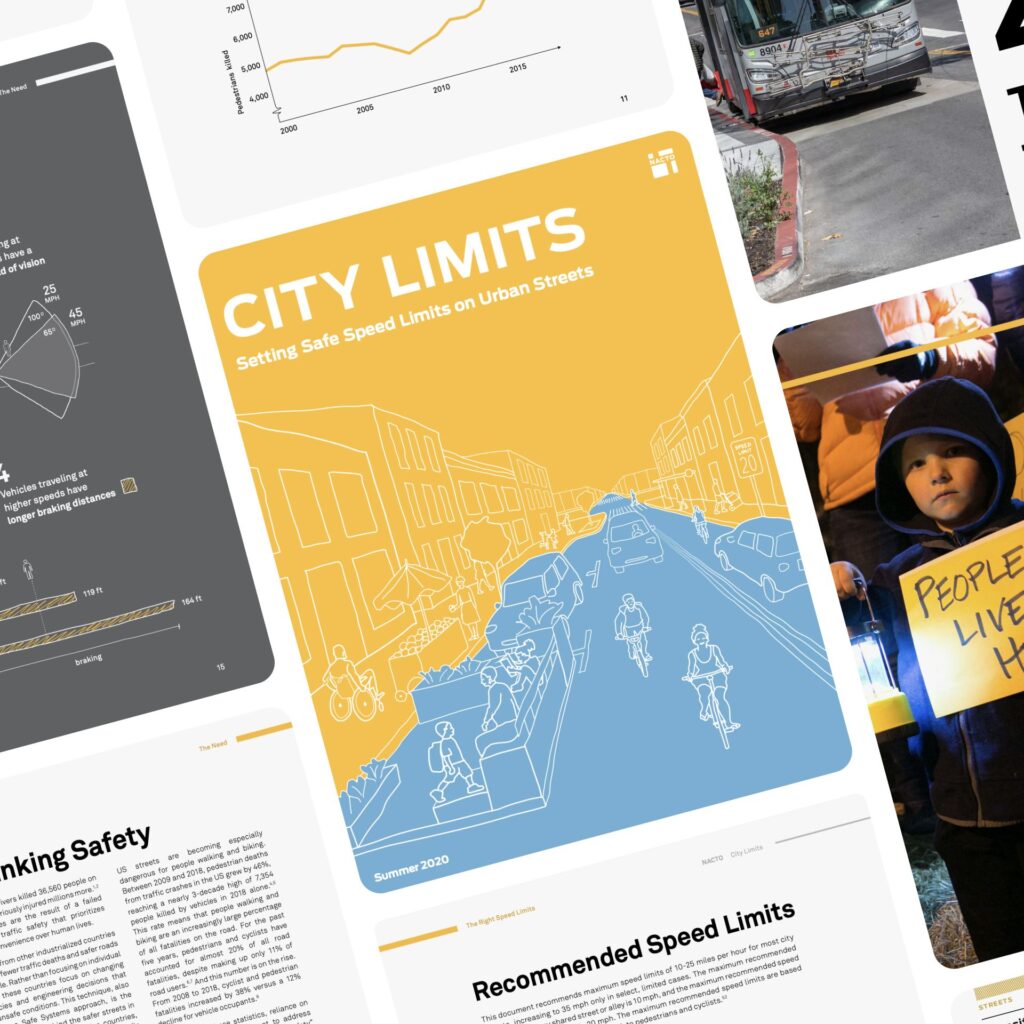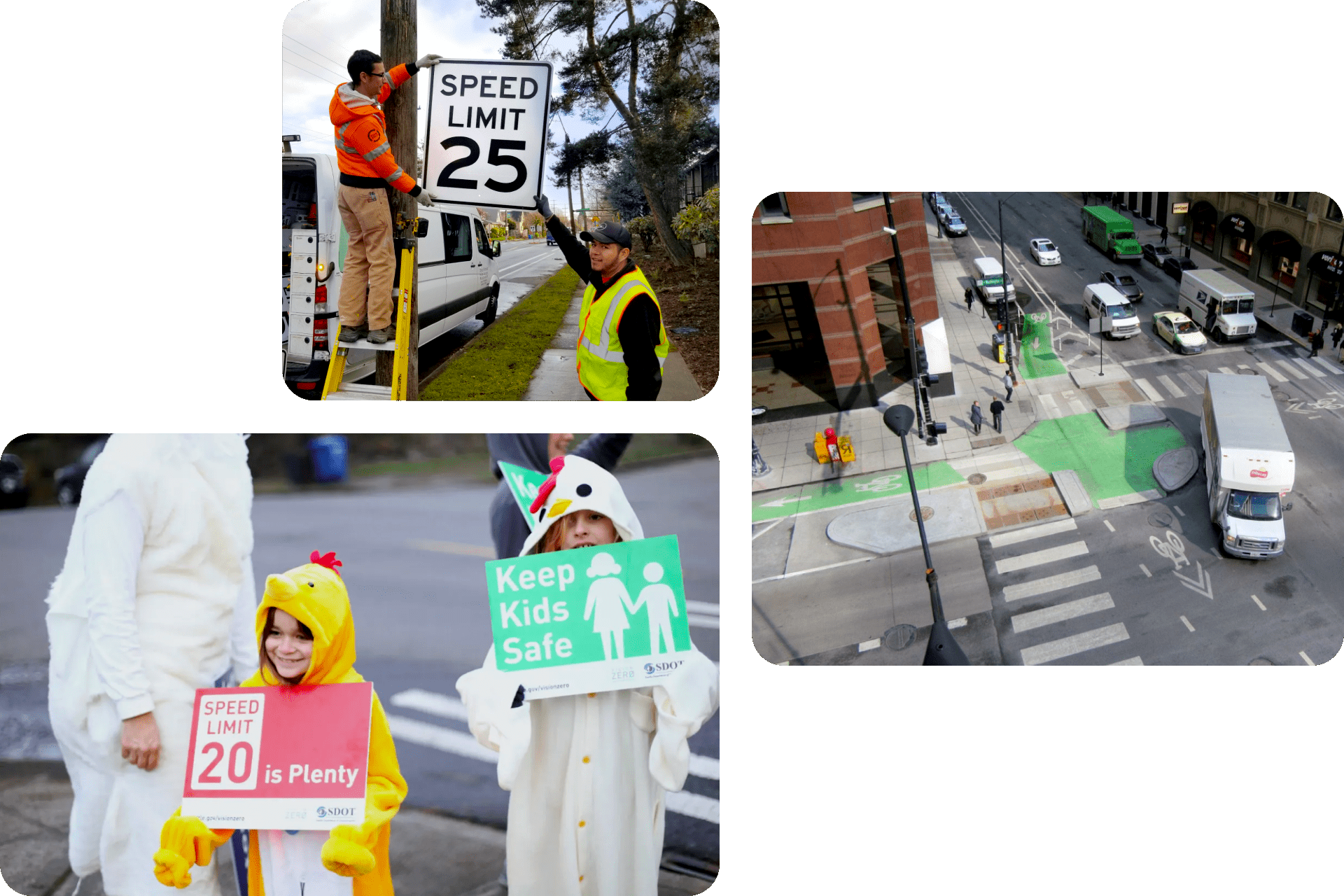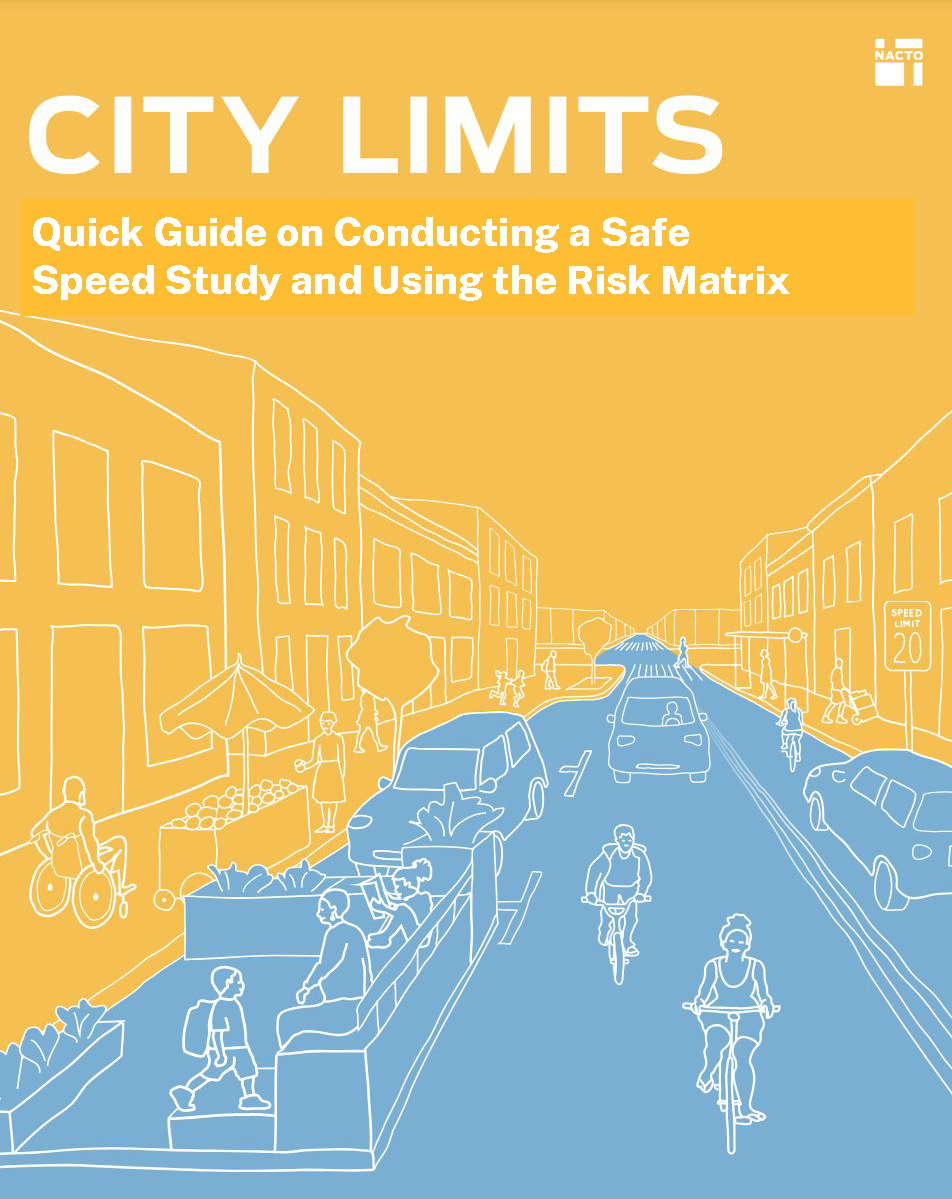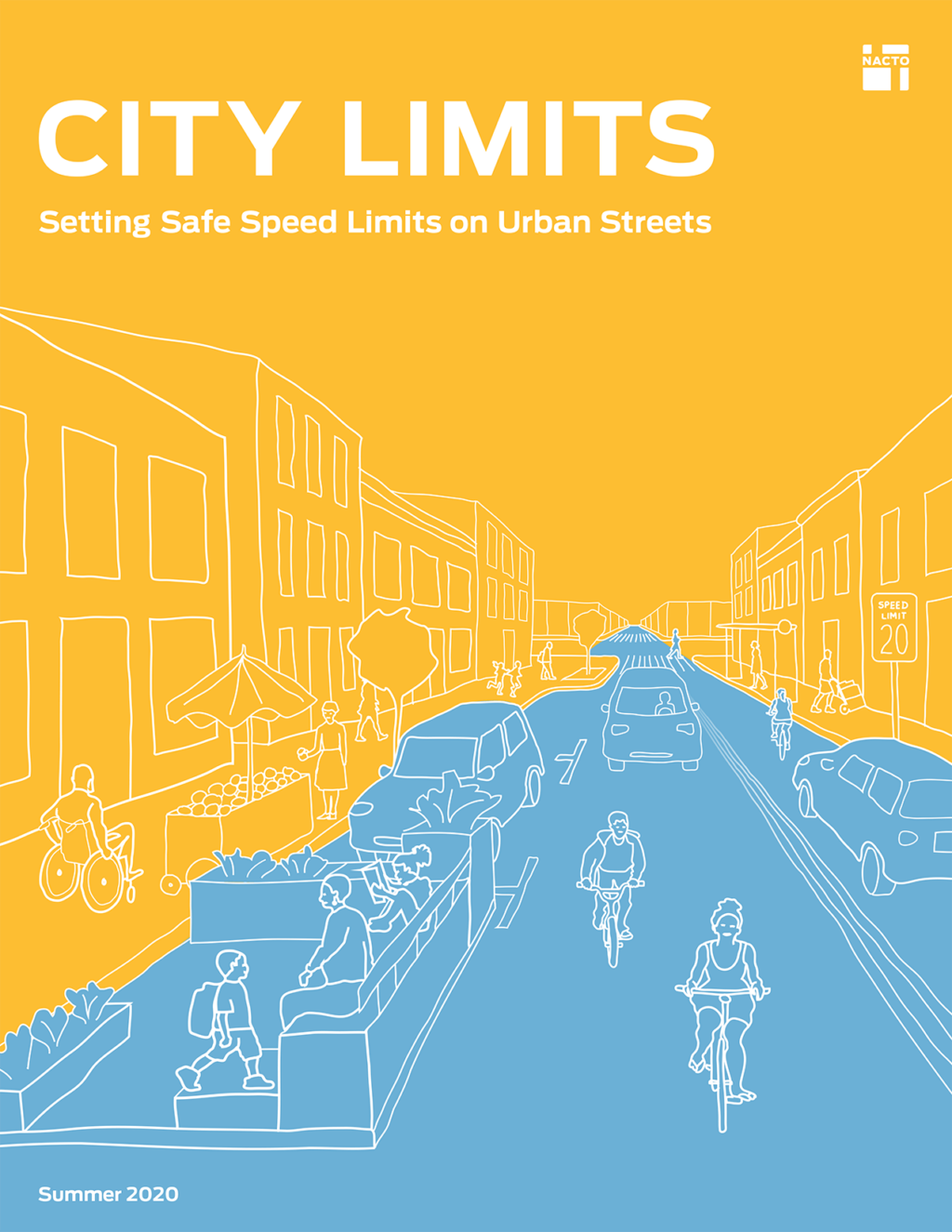We cannot reduce traffic fatalities on U.S. city streets without reducing speeds.
Encouraging safer speeds through street design, regulations, and appropriate enforcement is a core pillar of the Safe Systems Approach. As vehicular speeds rise, crashes are more likely to occur and when they do occur, they’re more likely to be deadly. A person hit by a car traveling at 35 miles per hour is five times more likely to die than a person hit by a car traveling at 20 miles per hour. Conversely, small reductions in speed can have large safety gains: according to the Highway Safety Manual, slowing average speeds by just one mile per hour can result in a 17% decrease in fatal crashes.
Using NACTO-developed guidance, cities are leading the way on encouraging safer speeds. They have several important tools to manage speeds on their streets:
- Setting safer speed limits using NACTO’s City Limits speed limit setting guidance
- Designing streets to prevent drivers from traveling at unsafe speeds
- Implementing automated speed enforcement in the appropriate places
Together, NACTO and our members are also pressing for changes to federal regulations that clear the path for city transportation agencies and state DOTs to use these critical tools. One success? The 11th edition of the MUTCD now recommends a proactive, contextual approach to speed limits–a change that NACTO members have long advocated for.
To bring down speeds and make streets safer, practitioners at all levels of government need to embrace and implement the design tools that we know save lives. NACTO’s design guides, endorsed by the Federal Highway Administration, represent best practices for safe, multimodal urban streets.
But there is much more to be done: nearly two-thirds of urban traffic fatalities occur on state-owned roads, where city transportation officials typically have little or no control over the street design, signal timing, or speed limits. On these streets, state officials can and should use NACTO design and speed limit setting guidance.
Achieving safer outcomes on our streets is within reach. But we need to work collectively to implement the tools that we know will save lives.

Design Guide
City Limits
A context-sensitive approach to setting safe speed limits on urban streets.
Photo Credits: Speed limit demonstration via Seattle Department of Transportation, speed limit installation via City of Portland, large vehicle turning via City of Chicago


